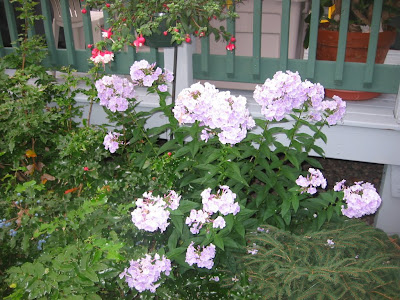


Sunday, 8:00 AM. 60 degrees, wind W, calm to light. The channel is crawling slightly. Air and water currents at various levels from often distant sources can create wave action that seems contrary to observed wind conditions. The sky is lightly overcast, and the barometer trends down, predicting partly cloudy skies.
The Phlox genus, in the Polemonium family, consists of about 60 species, mostly North American. They are common and important garden plants, various species and varieties blooming spring, summer or fall. They range in appearance from the spring blooming, creeping P. stolonifera of dunes and dry hillsides to the tall, fall blooming P. paniculata of dry eastern woods and meadows. Phlox range in color from white to red, pink to blue and everything in between. They have few culinary or medicinal uses.
There is a common misconception that American native plants such as Phlox are underused in American horticulture, which is not really the case. American native flowers, trees and shrubs are a staple of gardening and arboriculture both here and in Europe. The issue is confused by the fact than many North American plants, introduced to Europe hundreds of years ago by plant explorers, and often much hybridized there, have been traded back over the years to North America as European plants. And of course many Asian plants have been introduced here also, since the climates of Japan, Korea and northern Asia are very similar to our continental climate and they adapt well.
The pileated woodpeckers are calling from many directions this morning.











No comments:
Post a Comment